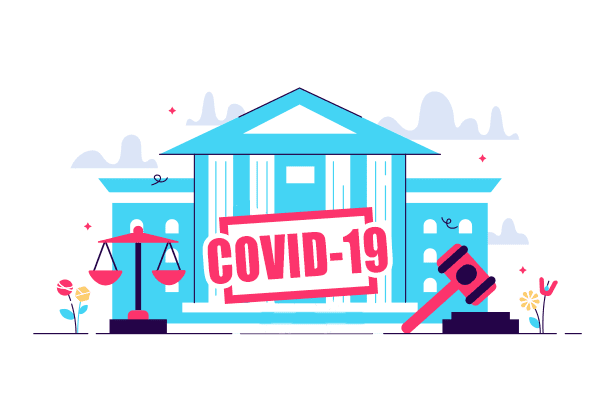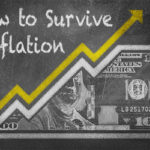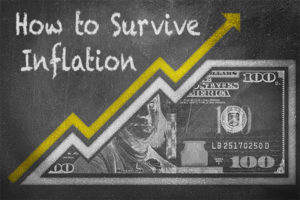The storm is coming. American consumers will be filing personal bankruptcies in record numbers by the end of 2020.
That is the projection from bankruptcy attorneys, bankers and other experts who project that the COVID-19 era will lead to a historic financial tsunami.
“Tsunami, hurricane, flood, bloodbath … there are a variety of words you could use,’’ Miami-based bankruptcy attorney Joe Pack said of the predicted rise in bankruptcy filings. “It’s not going to be good.’’
“In my opinion, it is going to be a Great Depression the likes of which we’ve never seen,’’ Las Vegas-based bankruptcy attorney Rory Vohwinkel said.
“From the fall of 2020 for at least two more years, I predict millions of bankruptcies as consumers try to forestall the inevitable devastation and homelessness,’’ Baltimore-based bankruptcy attorney Ron Drescher said. “People who suddenly find themselves bereft of income but facing creditor enforcement actions will have nowhere to turn.’’
Government Intervention Delayed Bankruptcy Filings
Even in the thick of a coronavirus pandemic, there were actually fewer American personal bankruptcies during the second quarter of 2020 (April-June) than a year ago. That’s understandable.
Consumers were kept afloat with a variety of government and business aids, such as $1,200 stimulus checks, $600 weekly federal unemployment payments, the Paycheck Protection Program, small business loans, a halt on foreclosures/evictions and forbearance on mortgage or credit card debt.
Things might be dire, but the various forms of aid have produced almost a state of suspended animation, an altered reality.
“The many programs have benefitted consumers, but this governmental largesse is going to end,’’ Drescher said.
“If someone owns a shopping center and their tenants can’t pay their rent or be evicted because of protections, once those protections go away, the very day, you can look for those evictions to start,’’ Pack said. “The owner has a mortgage, too, and they will feel pressure from the bank. Once the gate is lifted, the vicious cycle begins.’’
Bankruptcy Statistics During COVID-19 Pandemic
The vicious cycle already has been seen in corporate bankruptcies. According to a U.S. Chamber of Commerce poll, about 43% of small businesses likely will close permanently within the final six months of 2020. When July began, nearly 100 companies with more than $100 million in debt had filed for Chapter 11 bankruptcy protection, according to the American Bankruptcy Institute. That puts this year on pace to become the second-highest total behind 2009, the throes of the last financial crisis. Financial threats have encircled department stores, hotels, cruise lines, rental-car companies, airlines, restaurants and movie theaters.
According to the American Bankruptcy Institute, Chapter 11 bankruptcy filings in the commercial sector were up 48% in May from the previous year. More significantly, those bankruptcies were up 30% just between April and May.
The International Monetary Fund projects that the world economy will contract by about 4.9% this year. U.S. Federal Reserve chairman Jerome Powell said the American economy is looking at a 6.5% contraction this year. Powell termed the extent of the downturn and the pace of recovery as “extraordinarily uncertain.’’
Meanwhile, personal bankruptcies were down by about 25% in the second quarter of 2020 — perhaps a reflection of the boost from government programs, stay-at-home orders or the temporary closing of bankruptcy courts — but they are expected to keep rising through the remainder of the year. It could coincide with the growing reduction of government aid.
Chapter 7 bankruptcies, the most common form of personal filings, peaked at 1.1-million in 2010 on the heels of America’s Great Recession. That figure had tapered down to 450,000 filings by 2019. Once protections are lifted, things could again skyrocket.
“The political climate is not warm to more governmental stimulus,’’ Drescher said. “There are very significant barriers to get it through Congress. So, I would not procrastinate hoping that the federal government is going to save you.
“State and local governments are not likely to offer more help because they are seriously cash strapped. I would expect that there will be municipal bankruptcies as well, which could jeopardize pensions.’’
Consumers should consider the possibility of bankruptcy. They should also be forewarned about a false sense of security.
“Banks are not your friends,’’ Vohwinkel said. “They may talk nice to the media and have commercials about how they understand you’re going through tough times and we’re all in this together, but the honest truth is they only care about themselves and their investors or shareholders.
“Once you stop paying and the moratoriums on foreclosures and evictions run out, they will start foreclosures, evictions, collections, repossessions and garnishments.’’
Bankruptcy Pros & Cons
COVID-19 has put some consumers in unprecedented situations. For the first time, they might be asking these questions: What should I know about bankruptcy? Is bankruptcy the best choice for me?
There are three main types of bankruptcy:
Chapter 7 — It discharges most of your unsecured debt, including personal loans and credit cards. The process is generally completed in 4-6 months. You qualify automatically if your average gross monthly income falls below the median figure for your state. You might be forced to sell any non-exempt assets to pay your debt. Some assets can be retained.
Chapter 13 — It sets up a repayment plan that allows you to pay back creditors over time. No property is required to be liquidated, but the process might take 3-5 years before completion. You must have regular income to make the required monthly payments.
Chapter 11 — Typically reserved for businesses, it’s a reorganization or restructuring of the company. Unlike Chapter 7, an option for businesses, Chapter 11 does not require a liquidation of assets. Businesses can maintain their assets and continue operations, but must devise a plan to pay off some of their debt or get it forgiven.
Pros of Bankruptcy
- It eliminates or reduces debt for people in dire financial situations.
- It temporarily prohibits creditors from foreclosing on a home or repossessing a car.
- It temporarily prevents wage garnishment, debt collectors’ harassment or disconnection of utilities.
- It stops the harassing phone calls from collection agencies.
Cons of Bankruptcy
- It affects your credit record for up to 10 years, depending on which form you choose. That creates problems in obtaining loans for homes, cars or other big-ticket items.
- It becomes a public record that can be viewed by potential employers, insurance companies, banks or other lenders.
- You will find it difficult to qualify for loans for several years, especially mortgage or home equity loans. Even if you get loans, you will pay very high interest rates.
Bankruptcy Stigma
There’s often a stigma associated with bankruptcy. But the rampant damage of COVID-19 should minimize that feeling.
“There should be no shame or stigma with filing for bankruptcy, especially now,’’ Pack said. “If you spent your life building a business and you can’t do business because of a government regulation that prohibits customers coming into your shop, there’s no shame in that. It’s not your fault.’’
“Bankruptcy is intended to give the honest debtor a fresh start,’’ New Jersey-based bankruptcy attorney Bruce Levitt said. “It is provided for in the United State Constitution, as well as the Bible. Individuals who have been affected by the pandemic are exactly the type of people that the Bankruptcy Code is intended to protect. Over the 35 years that I have represented individuals and small businesses in bankruptcy proceedings, I have seen the transformation from stress to a sense of liberation in people once the financial issues are addressed.’’
But the initial mental stigma is very real, according to Dai Rosenblum, a Pennsylvania-based bankruptcy attorney.
“We bankruptcy lawyers are baffled by clients,’’ Rosenblum said. “If someone is (injured), they don’t hesitate to go to a doctor. But if they’re (having financial difficulty), it’s, ‘I’m not going to go see a lawyer. I’m going to figure this out by myself. I know what lawyers know.’
“Ask this: Is the country better off if people can get a fresh start, or is the country better off if people have to die mired in debt? … A year or two after their bankruptcy, people never think about it. Nobody notices the absence of stress.’’
Court Closures from COVID-19
With many courts closing their physical locations due to COVID-19 and the expected glut of personal bankruptcy filings during the remainder of 2020, it makes for a potentially monumental traffic jam.
Just because a court is closed, your bankruptcy business can still be managed efficiently in the digital era. Yes, courts have discovered the merits of Zoom calls, too.
COVID-19 also has given rise to concepts such as CourtCall.com, a remote court appearance platform that often costs less than gas, parking and lunch. And you can work on something else while waiting your turn.
“Courts are ‘open’ for business, even though they’re not open for people to visit,’’ Drescher said. “Things have changed and I think for the better. Now all court hearings and creditor/trustee meetings are being held over video or telephone. People who are already cash strapped don’t need to take off a half-day of work to go to the courthouse and wait around for a five-minute meeting with the trustee.’’
It’s always best to be prepared, though. The potential glut of bankruptcies could mean longer waiting periods to file, attorneys with extra-tight schedules and possibly a rise in the cost of a bankruptcy filing.
Bankruptcy Rule Changes Due to COVID-19
COVID-19 has caused a change in some bankruptcy-related rules and procedures.
Among the changes:
- Under the Federal CARES (Coronavirus Aid, Relief, and Economic Security) Act, debtors with a pre-existing Chapter 13 repayment plan can extend its length to seven years. But the debtor must show material financial hardship related to COVID-19.
- Stimulus checks and other federal payments related to COVID-19 will not count as monthly income for debtors filing under Chapter 7 and they won’t count as disposable income under Chapter 13. The payments won’t affect eligibility under either plan.
- The debtor may not be required to provide an original signature (also known as a “wet signature’’) on the bankruptcy petition. During COVID-19, debtors and attorneys have been permitted to review paperwork virtually instead of meeting to arrange for a physical signature.
- Instead of physically attending a meeting of creditors, debtors can now conduct the meetings by telephone or through a virtual platform.
“The bankruptcy courts will become more and more busy, but this is a tsunami, meaning a powerful slow-moving wave instead of an immediate explosion,’’ Las Vegas-based bankruptcy attorney Brian Morris said. “Depending on how things go with the economy, we might not see the peak of the wave until 2022 or later. I expect the courts will be able to adjust. They have likely already started to hold meetings in preparation for the coming wave.’’
Preparing for Financial Turmoil
Whether it was prolonged financial carelessness or the unexpected disruption of COVID-19 that created a bankruptcy filing, there are strategies to follow for anyone seeking a financial rebound.
“If you’re out of work, hold on to your cash,’’ Drescher said. “Spending reserve money to pay credit card bills and other debts that could be discharged in bankruptcy would be a terrible mistake right now. Be brave, pragmatic and proactive. Like the virus, the economic problems aren’t going away.’’
“Stay liquid as possible and reduce expenditures where you can,’’ said Guy Baker, founder of Wealth Team Alliances, a wealth advisor firm. “Don’t put yourself in a position where people owe you money. Make them pay cash or don’t provide the service. Better to not sell something than to sell it and not get paid.’’
“The best way a person or business can cope with the tsunami of bankruptcies coming down the pike is to be nimble and small and have as little reliance on other enterprises as possible,’’ New York-based bankruptcy attorney David Reischer said.
The storm is coming. Be ready for it.
Sources:
- McMickle, J. (2020, 15 June) The Calm Before The Storm Of Bankruptcies. Retrieved from https://www.americanbanker.com/opinion/the-calm-before-the-storm-of-bankruptcies
- Braga, M. (2020, 29 June) With Bankruptcies Surging, 2020 May Become One Of The Busiest Years For Chapter 11 Filings Since The Great Recession. Retrieved from https://www.usatoday.com/story/money/2020/06/29/coronavirus-oil-industry-troubles-could-fuel-chapter-11-filings-2020/3249794001/
- Sozzi, B. (2020, 20 April) A Tsunami Of Bankruptcies Are About To Wash Away America’s Retail Sector. Retrieved from https://finance.yahoo.com/news/a-tsunami-of-bankruptcies-are-about-to-wash-away-americas-retail-sector-142047677.html
- Lawless, B. (2020, 16 April) A Coming Consumer Bankruptcy Tsunami, Wave, Or Ripple? Retrieved from https://www.creditslips.org/creditslips/2020/04/a-coming-consumer-bankruptcy-tsunami-wave-or-ripple.html
- Daley, B. (2020, 13 May) Bankruptcy Courts Ill-Prepared For Tsunami Of People Going Broke From Coronavirus Shutdown. Retrieved from https://theconversation.com/bankruptcy-courts-ill-prepared-for-tsunami-of-people-going-broke-from-coronavirus-shutdown-137571
- Skiba, P. (2020, 22 May) Next Financial Crisis: A Tsunami Of Bankruptcies Expected As People Go Broke From COVID-19 Shutdown. Retrieved from http://www.milwaukeeindependent.com/syndicated/next-financial-crisis-tsunami-bankruptcies-expected-people-go-broke-covid-19-shutdown/
- Weston, L. (2020, 4 May) Start Thinking About Bankruptcy Now, Not Later. Retrieved from https://www.seattletimes.com/business/liz-weston-start-thinking-bankruptcy-now-not-later/
- Walsh, M. (2020, 18 June) A Tidal Wave Of Bankruptices Is Coming. Retrieved from https://www.nytimes.com/2020/06/18/business/corporate-bankruptcy-coronavirus.html


















